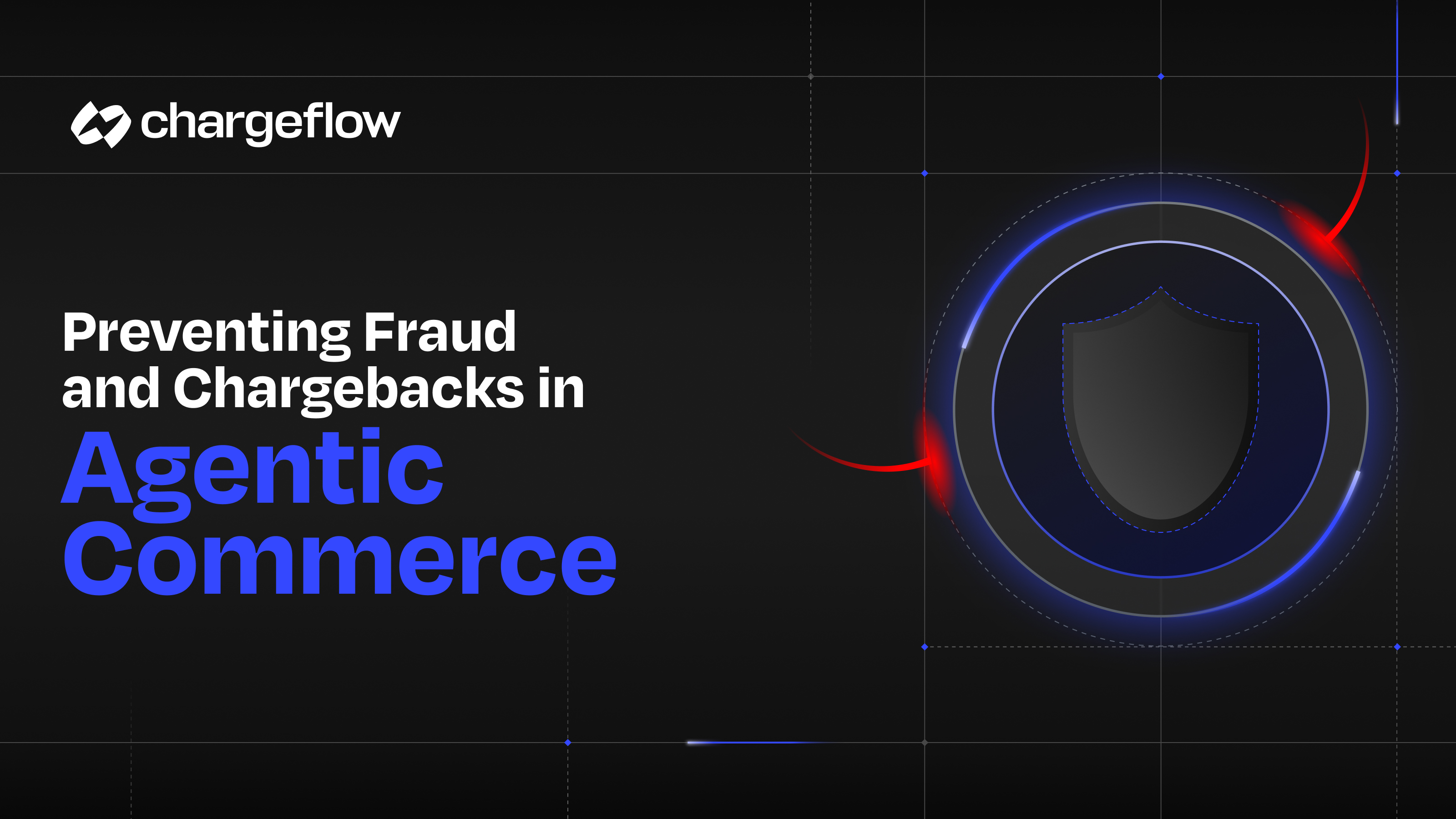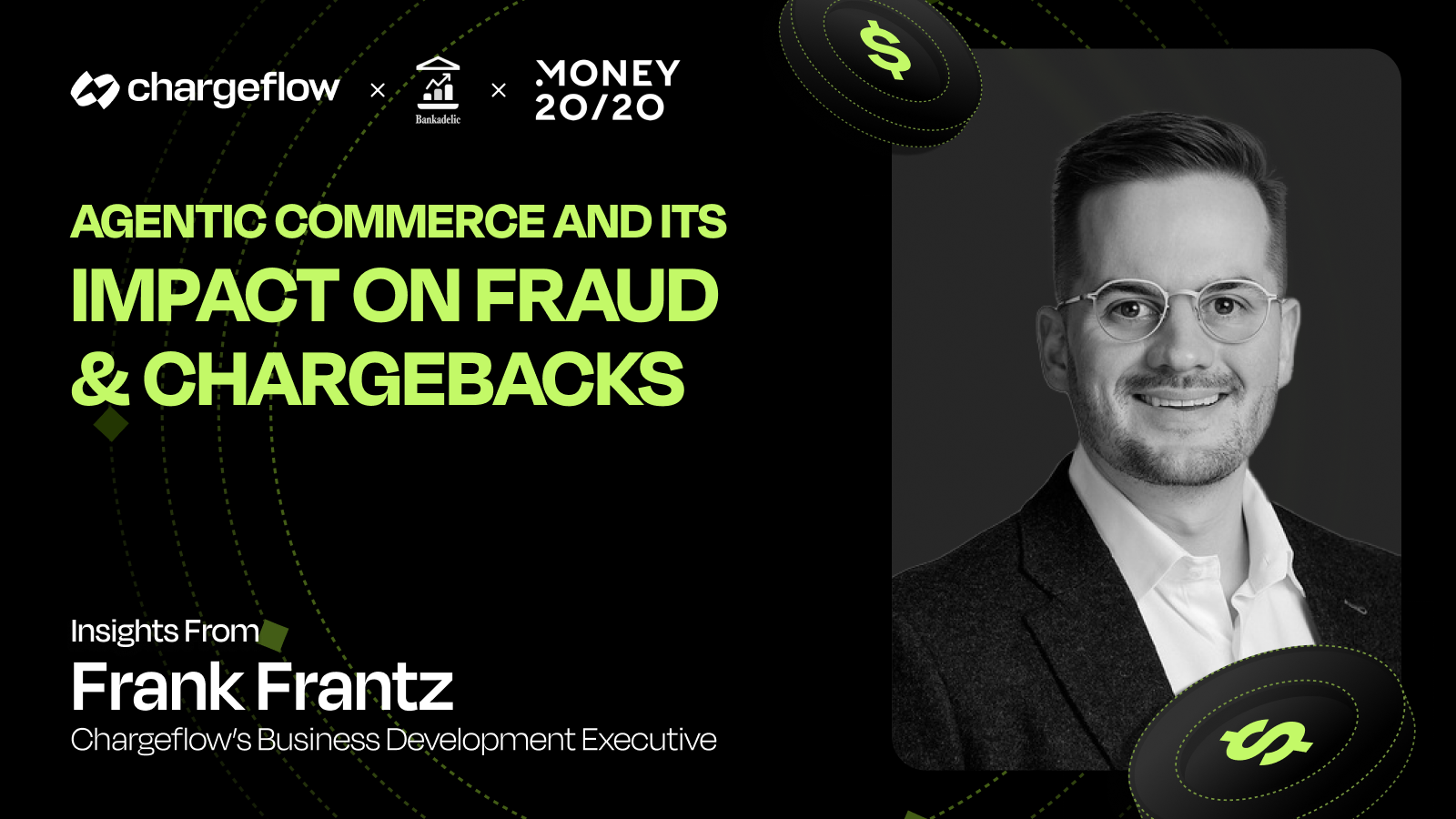Safeguard Your Store with Fraud Filters: Prevent Any Scam from Happening on Your E-Commerce Platform

Chargebacks?
No longer your problem.
Recover 4x more chargebacks and prevent up to 90% of incoming ones, powered by AI and a global network of 15,000 merchants.
Shield your store from scams with powerful fraud filters. Prevent any fraudulent activity and safeguard your business. Explore our effective solutions.
Welcome to the world of e-commerce, where success and safety go hand in hand. As a merchant, your online store holds tremendous potential, but it also faces the constant threat of fraud. Fraud Filters can be your virtual sentinels against scams.
In this guide, we'll explore these powerful guardians, their benefits, limitations, and how to strike the perfect balance for your business. Get ready to safeguard your store and build customer trust.
Let's dive in!
What are Fraud Filters?
Fraud filters are sophisticated algorithms designed to detect and prevent fraudulent activities within your online store. They act as an invisible shield, analyzing each transaction in real-time, and identifying suspicious patterns that might indicate fraudulent behavior.
The Purpose They Serve: Staying One Step Ahead
Think of fraud filters as your vigilant assistants, keeping an eye out for any red flags that could compromise your business. They work tirelessly behind the scenes, scrutinizing factors like transaction amounts, geolocation, and device information to distinguish legitimate orders from potentially fraudulent ones.
Identifying Suspicious Activities: Unmasking Fraudsters
By analyzing multiple data points, fraud filters create a digital fingerprint for each transaction. This allows them to compare incoming orders with known patterns of fraudulent behavior, promptly flagging any inconsistencies or abnormalities.
Common Fraud Filter Parameters
As an e-commerce merchant, protecting your business from fraud is paramount. Fraud filters are your frontline defense against malicious activities, ensuring secure transactions and maintaining customer trust. Understanding the common fraud filter parameters empowers you to fortify your store and keep scammers at bay.
1. Transaction Amount and Frequency Limits
Setting transaction amount and frequency limits is a crucial step in fraud prevention. By defining the maximum allowable values for individual purchases and the frequency of transactions, you can flag and block suspicious activities that deviate from normal customer behavior.
2. Geolocation Tracking
Geolocation tracking helps you verify the authenticity of transactions based on the customer's location. By comparing the customer's IP address with their billing and shipping addresses, you can detect and prevent fraudulent orders originating from high-risk locations.
3. Device Fingerprinting
Each device leaves a unique digital fingerprint, allowing you to identify returning customers and potential fraudsters. By analyzing device attributes such as IP address, browser type, and operating system, fraud filters can flag suspicious devices for further scrutiny.
4. Proxy Detection
Scammers often use proxies to hide their true location and identity. Fraud filters equipped with proxy detection capabilities can identify and block transactions originating from anonymous or high-risk proxy servers.
5. Card Verification Value (CVV) Check
Requiring customers to provide the CVV code on their credit card adds an extra layer of security. Fraud filters can validate this three-digit code, ensuring that the customer possesses the physical card during the transaction.
6. Address Verification Service (AVS)
AVS compares the billing address provided by the customer with the address on file with the credit card company. A mismatch can be a red flag for potential fraud, prompting further investigation.
7. 3D Secure Authentication
Implementing 3D Secure adds an additional authentication step during checkout. By redirecting the customer to their card issuer's website for verification, you minimize the risk of unauthorized transactions.
8. Custom Rules and Blacklists
Tailoring fraud filters to your specific business needs is essential. You can set custom rules based on historical transaction data, flagging certain behaviors or criteria associated with fraudulent orders. Additionally, maintaining a blacklist of known fraudsters can prevent repeat offenses.
9. Machine Learning Algorithms
Leveraging the power of machine learning, advanced fraud filters continuously adapt and improve their detection capabilities. These algorithms analyze vast amounts of data to identify evolving fraud patterns and stay one step ahead of scammers.
10. Real-time Scoring
Real-time scoring provides an instant risk assessment for each transaction. By assigning a risk score based on the parameters above, fraud filters can automatically approve low-risk orders and hold potentially fraudulent ones for manual review.
The Benefits of Fraud Filters
As a merchant, integrating these intelligent guardians into your e-commerce platform brings forth an array of compelling advantages that will elevate your business to new heights of security and prosperity. Let's explore the benefits that await you:
1. Reduce Chargebacks and Losses
Every chargeback comes with a sting – lost revenue, product, and reputation. Fraud filters act as your vigilant watch dogs, swiftly identifying and intercepting suspicious transactions before they wreak havoc on your profits.
With fewer chargebacks to contend with, your bottom line remains intact, allowing you to focus on growth and customer satisfaction.
2. Enhance Customer Trust
Nothing is more crucial to your success than the trust of your customers. Fraud filters instill confidence in your buyers, assuring them that their personal and financial information is safe within your online store.
By protecting their interests, you forge lasting relationships and transform first-time shoppers into loyal brand advocates.
3. Improve Business Reputation
In the bustling world of e-commerce, reputation is everything. The implementation of fraud filters sends a powerful message to your customers – you prioritize their safety and are willing to go the extra mile to ensure a secure shopping experience.
This commitment to excellence builds a reputation that sets you apart from competitors and attracts new customers by word of mouth.
4. Streamline Order Processing
With fraud filters in place, the automation of fraud detection eliminates the need for tedious manual reviews of every transaction.
As a merchant, you can now focus your time and resources on more critical aspects of your business, such as marketing strategies, inventory management, and customer engagement, ultimately fostering a smoother and more efficient operation.
5. Gain Data-driven Insights for Business Growth
Fraud filters are more than just guardians; they are invaluable sources of data. By analyzing attempted fraudulent activities, you gain deep insights into the patterns and behaviors of potential scammers.
Armed with this knowledge, you can make data-driven decisions, optimize your processes, and stay one step ahead of emerging threats.
The Downside of Fraud Filters
Let's explore the potential drawbacks of fraud filters, so you can strike the right balance between security and a seamless shopping experience for your valued customers.
1. False Positives: When Legitimate Transactions Get Blocked
One of the most significant challenges with fraud filters is the occurrence of false positives. These filters can sometimes mistake legitimate transactions as fraudulent activities, leading to the unfortunate blocking of genuine customers.
It's frustrating for you as a merchant, and it can be equally frustrating for your customers who face unnecessary obstacles during the checkout process.
2. Impact on Customer Experience
Imagine this: a loyal customer trying to make a high-value purchase on your website, only to have their transaction flagged by the fraud filter. Not only does this inconvenience them, but it may also make them question the reliability of your store.
Over time, such negative experiences can erode customer trust and loyalty, impacting your business's reputation.
3. Delayed Order Processing
Fraud filters often introduce an additional step of manual review for flagged transactions. While this process is essential to prevent potential fraud, it can cause delays in order processing.
Customers expect swift and seamless service, and any delay might lead them to abandon their purchase or look for alternatives elsewhere.
4. Limited Insights into Fraud Techniques
Fraudsters are continually evolving their tactics to bypass security measures, including fraud filters. As a result, relying solely on automated systems may restrict your understanding of the latest fraud techniques.
It's essential to stay updated and invest in ongoing education to outsmart scammers effectively.
5. Over-Reliance on Automation
While automation is a powerful ally in the fight against fraud, excessive reliance on these systems may have unintended consequences. Fraud filters are not foolproof, and solely depending on them might create blind spots in your security infrastructure, leaving your store vulnerable to emerging threats.
6. Complex Implementation and Maintenance
Integrating and configuring fraud filters can be a time-consuming and intricate process. It requires meticulous attention to detail and continuous monitoring to ensure optimal performance.
For small businesses with limited resources, this complexity may present a significant challenge.
7. Cost Considerations
Implementing robust fraud filters often comes with associated costs. These expenses might include initial setup, ongoing maintenance, and potential fees for each transaction reviewed manually. While the investment is worthwhile for most merchants, it's crucial to strike a balance between cost and security.
Finding the Right Balance: Enhancing Fraud Prevention without Compromising User Experience
While fraud filters have their downsides, they remain a vital tool in safeguarding your store from scams. To strike the right balance, consider adopting a multi-layered approach to fraud prevention.
Combine the power of automated systems with manual review by your team. Constantly reassess your fraud filter rules, keeping an eye on false positives, and refining them to minimize disruptions to legitimate transactions.
Right Strategy for Fraud Filters
Implementing the right strategy for fraud filters can make all the difference in keeping your business and customers protected. Here's how you can fortify your defense against fraudsters and enjoy peace of mind while running your e-commerce platform.
1. Tailor Fraud Filters to Your Business Needs
One size does not fit all when it comes to fraud filters. Every business is unique, and so are its fraud risks. Take the time to understand the specific vulnerabilities your store may face. Analyze transaction patterns, customer behavior, and historical fraud data.
By customizing your fraud filters to match your business, you can achieve a more accurate and efficient fraud detection system.
2. Strike a Balance Between Security and Customer Experience
While preventing fraud is essential, you also want to ensure a smooth shopping experience for your customers. Overly aggressive fraud filters may inadvertently flag legitimate transactions, leading to frustrated customers and lost sales.
Find the sweet spot where security meets convenience to minimize false positives without compromising on protection.
3. Combine Manual Review with Automated Systems
Relying solely on automated fraud filters might not be sufficient. Human intervention can add an extra layer of assurance, especially for high-value or suspicious transactions. Train your team to review flagged orders diligently, confirming the authenticity of the purchase.
A collaborative effort between your staff and the automated system can improve fraud detection accuracy.
4. Regularly Update and Improve Fraud Filters
Fraudsters are continually evolving their tactics, so it's crucial to stay one step ahead. Keep your fraud filters up to date with the latest threat intelligence and industry best practices. Work closely with your fraud prevention provider to ensure you have access to the most advanced tools and technologies.
5. Educate Your Staff on Fraud Awareness
Equip your team with the knowledge to identify potential fraud indicators. Educate them about the latest fraud trends and warning signs to watch out for during customer interactions. By empowering your staff to spot suspicious activities, you can thwart fraud attempts in real-time.
6. Leverage Multi-Layered Security Measures
A single-faceted approach to fraud prevention might leave gaps in your defense. Implement multiple layers of security, such as 3D Secure authentication, device fingerprinting, and geolocation tracking.
By combining different fraud prevention methods, you create a formidable barrier that is harder for fraudsters to breach.
7. Monitor Real-Time Fraud Alerts
Fraud can strike at any moment, and real-time monitoring is vital for swift action. Set up automated alerts that notify you of suspicious activities immediately. With prompt notifications, you can respond promptly, safeguarding your store and customers from potential losses.
Measuring the Success of Fraud Filters
Now, it's essential to assess their effectiveness to ensure your efforts are paying off. Measuring the success of your fraud filters involves analyzing key performance indicators (KPIs) and continually improving your strategies.
1. Tracking the Decline in Chargebacks and Losses
One of the most tangible ways to measure the impact of fraud filters is by monitoring the decline in chargebacks and losses. As fraudulent transactions are blocked or flagged, the number of chargebacks should decrease, indicating a reduction in financial losses and dispute resolution efforts.
Keep a close eye on these numbers as they directly reflect the effectiveness of your fraud prevention measures.
2. Evaluating False Positives and False Negatives
While fraud filters aim to catch suspicious transactions, they can occasionally generate false positives (legitimate transactions flagged as fraudulent) or false negatives (fraudulent transactions overlooked).
Strike a balance between preventing fraud and not disrupting genuine transactions by carefully evaluating the rate of false positives and false negatives. Fine-tuning your filter rules can help reduce both, enhancing the accuracy of fraud detection.
3. Customer Satisfaction and Trust
Effective fraud filters should enhance your customers' shopping experience rather than hinder it. Happy customers are more likely to return and recommend your store to others.
Pay attention to customer feedback and reviews, as they offer valuable insights into how your fraud prevention measures impact their experience.
Building trust with your audience is vital for long-term success, and reliable fraud filters contribute to that trust.
4. Continuous Improvement and Iteration
Fraudsters are continually adapting their tactics, making it crucial for you to stay one step ahead. Regularly assess and update your fraud filter rules and parameters based on the latest trends and emerging threats.
Embrace a culture of continuous improvement, where you and your team actively collaborate to refine your fraud prevention strategies.
5. Collaboration with Payment Service Providers
Working closely with your payment service providers can yield valuable data and insights into fraud trends and patterns. They often possess access to extensive fraud databases and can offer guidance on optimizing your filters.
Establish a strong partnership with your payment service providers to leverage their expertise in fraud prevention.
6. Monitoring and Reporting in Real-time
Fraudsters strike quickly, so real-time monitoring is essential. Implement a robust system that alerts you immediately when suspicious activities are detected. Additionally, comprehensive fraud reporting and analysis allow you to spot patterns and areas of improvement quickly.
7. Industry Benchmarking
Compare your fraud prevention performance with industry benchmarks to gain a broader perspective. Industry-specific data can help you identify strengths and weaknesses in your current approach and provide insights into where you stand among your peers.
Final Thoughts
In the ever-changing digital landscape, securing your online store from fraud is essential for sustained success. Fraud filters are your reliable partners, preventing scams and safeguarding your revenue.
By implementing these advanced systems, you gain multiple benefits, reducing chargebacks and boosting customer trust. Yet, it's vital to strike a balance between automated filters and human review to ensure legitimate transactions are not affected.
Stay proactive, regularly update your fraud filters, and adapt to emerging threats using cutting-edge AI and machine learning. Prioritize the user experience, minimizing friction during checkout.
Collaborate with payment providers, prioritize data privacy, and comply with legal and ethical guidelines. Fraud filters become your shield, protecting your e-commerce kingdom and fostering a secure and reputable shopping environment.
With the right approach, you'll build trust with customers and pave the way for lasting success.

Chargebacks?
No longer your problem.
Recover 4x more chargebacks and prevent up to 90% of incoming ones, powered by AI and a global network of 15,000 merchants.






























.png)








